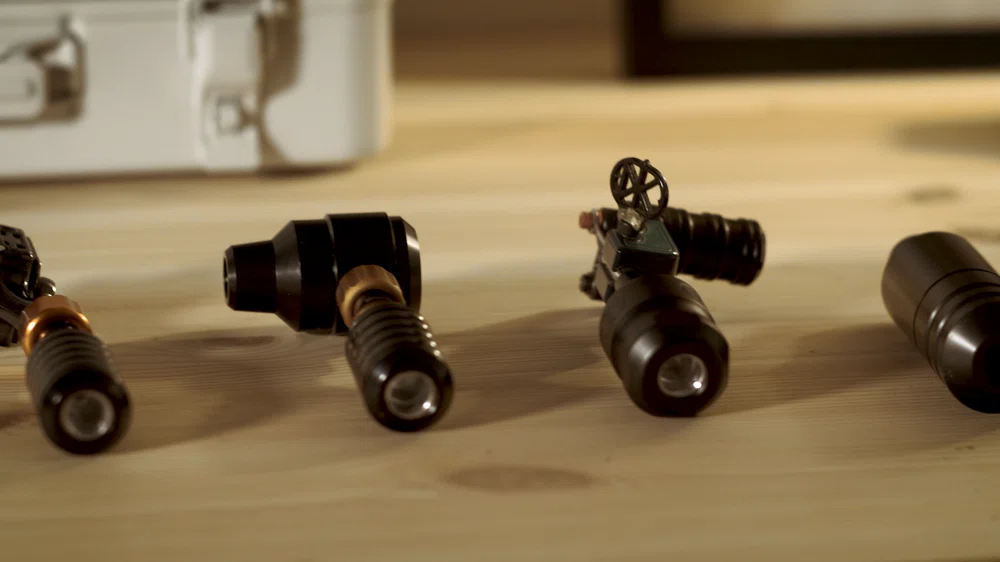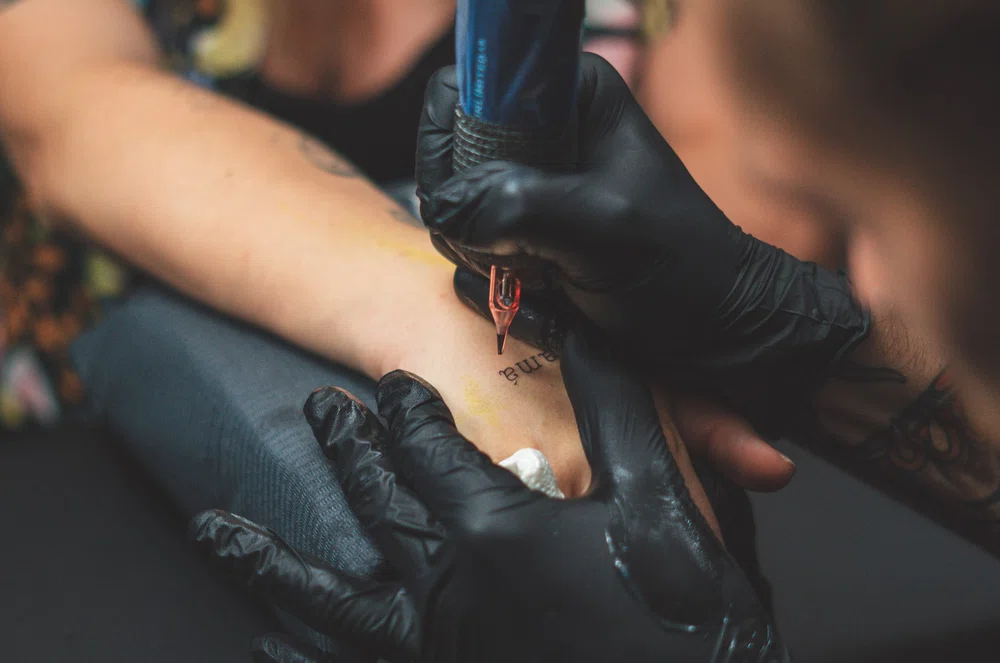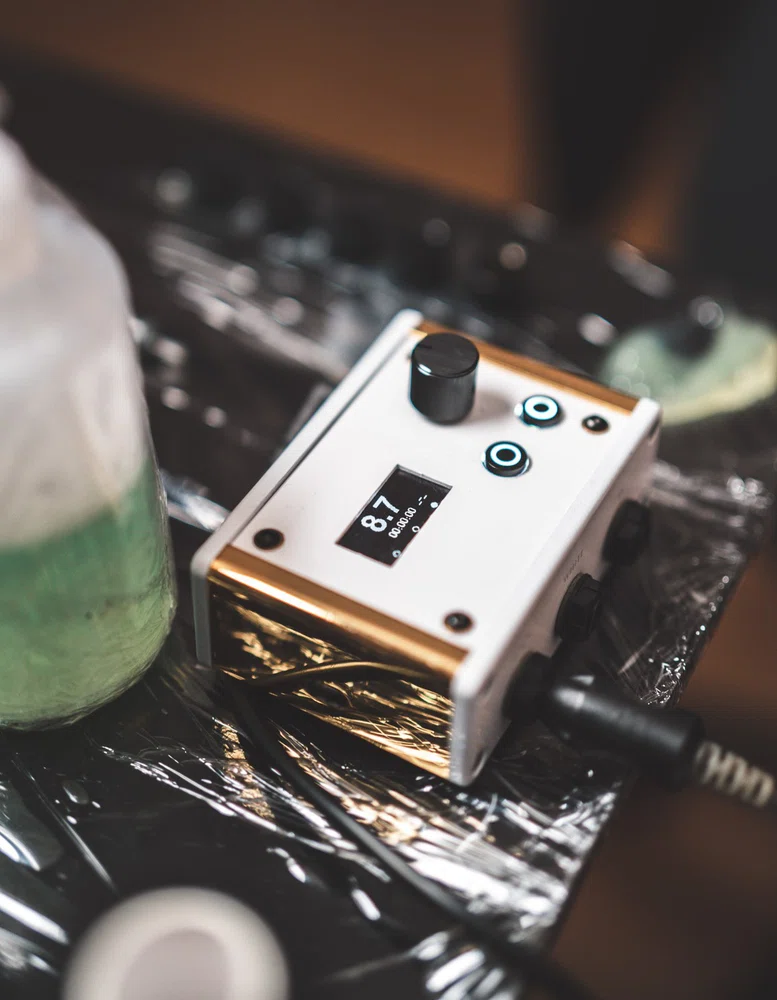Is there a standard voltage for tattooing?
Myths and truths about voltages and machines
04 January 2024
Well, what a great topic, right? Defining a voltage is not something simple, and the reality is that there are many conflicting opinions regarding this.
Some say that there are correct formulas and voltages for each use and others, on the contrary, believe that it is not possible to determine a universal rule.
Let’s analyse it.
Is there a universal voltage?
The reality is that no, there is no correct or universal voltage for tattooing since it always depends on many factors.
Such as, for example, the type of machine, the type of technique used and personal preferences.
Not all tattoo artists use the same machines, and each one has a different motor design. So determining a standard voltage is not possible.
But you can determine a range for each one.
When buying it, consult the manufacturer or distributor to know the most recommended option.
Types of machines and their voltages

As we mentioned before, the machines we use will influence many aspects, but above all the voltage they need to work more efficiently.
We are not talking about correct voltage values, but we refer to the calibres where each of these machines offers better performance.
All machines have different motors, and each one will have a better or worse response depending on the amount of power. This is why manufacturers usually indicate the most suitable range to work with each one of them.
This is also related to the type of work you want to do and what technique to use, which is why we can only provide general data as there is no user manual or applicable general rules.
You must be careful when choosing the voltage because the higher it is, the more damage is caused on the skin.
Due to the construction of their motor, some machines may be more sensitive to high voltages than others.
Therefore, if you are used to tattooing with one type of machine and then you change to others and apply the same voltage, you may hurt your client’s skin.
Rotary machines
Rotary machines do not have the same punch as coil machines.
In general, rotary machines, especially pen type, at low voltages can be slow to start and difficult to start.
Some machines have better performance from 6 volts, but this will always depend on the model of your machine.
On the other hand, for example, for line work, consider that rotary machines usually require much more power than coil machines.
Coil Machines
They are more versatile since they can be calibrated to measure in a personalized way.
The key here is knowing that a machine with a larger motor will always need more power.
Depending on the design, pen machines are usually larger than coil machines. This is why the latter generally requires less voltage because they have smaller motors.
Tattoo techniques and voltages
Just as there are different needles for each need, you will also use different voltages in each case. As mentioned before, the same voltages cannot be used in all machines.
Voltage for line tattooing
When it comes to line tattoos, it is necessary to use the highest voltage values.
And this is because the line must be well-defined and marked, which is why it cannot be done with low voltages.
For the use of Pen machines, between 9 and even 11 volts, approximately, can be used. But always consult the manual of the machine or with the manufacturer or distributor. Remember that each motor is different.
Rotary machines do not have the same power as coil machines, which is why they require higher voltages.
And conversely, some coil machines can work fluently between at a 4 and 6 value.

Voltage to tattoo shadows
For shadows, on the contrary, we will use lower voltages, since the desired effect does not require strong strokes.
The voltage that you require from the machine will depend on the technique that you use to make shadows. However, in general terms, rotating machines work properly with a voltage of 6 or 7.
One tip is to start with low voltages and then gradually increase the intensity. Test on different surfaces before tattooing clients to see how your machine performs and what your real needs are.
Enter here, Synthetic skins for tattooing, and discover what are the options to practice tattooing without ruining the client's skin.
Power Supply Problems

In addition to the above, some power supply problems may occur.
For example, you may be setting the “right” voltage for your machine and for the type of work you are doing but, the motor of the machine does not start or is slower than it should.
This can be caused by a fault in the power supply or its cable. The display might show the voltage correctly, but it is not returning the correct energy.
To solve it, you must resort to a tester, which is a device that measures electric currents.
You must set the device in the “alternating voltage” option at a maximum of 20 volts. You will see that it has two terminal cables (red and black, positive and negative, respectively).
Connect the cable you normally use, either RCA or Clipcord, to the power supply.
Next step, place the tester cables at the termination of the cable to the power supply, and the tester screen will show the real voltage that the cable is providing.
Important: When you buy tattoo power supplies and cables, make sure they are high quality.
They may be pricier, but remember that it is very essential to make a good investment to work comfortably and safely to avoid future problems.
In the end, cheap is expensive.
We hope this article has shed some light on the subject. Anyway, this is just the tip of the iceberg on everything there is to know about voltage. And the best way to learn how to put it into practice is through the guidance of an experienced tattoo professional.
So, if we've just piqued your curiosity and you feel like learning about one of the most important technical aspects of tattooing, we invite you to take a look at our MasterCourse: Realistic Tattooing, with Coreh Lopez. Inside, he not only teaches you everything in detail about voltage but also shows you his best tricks from the front row, raw and uncut!